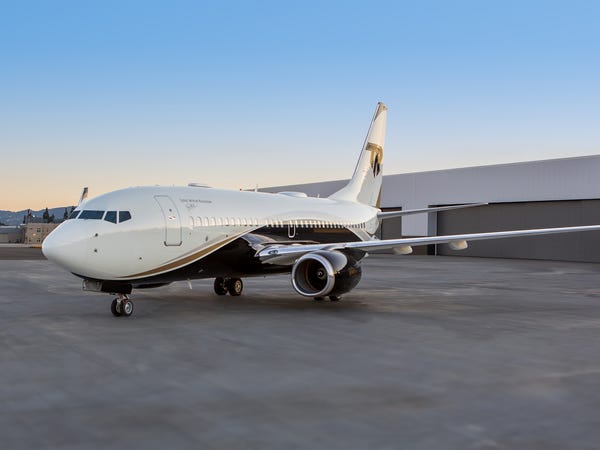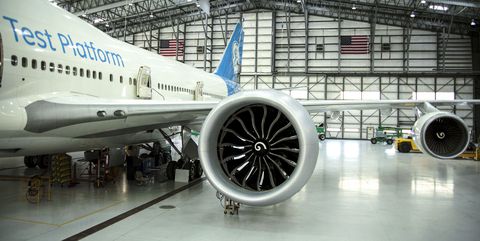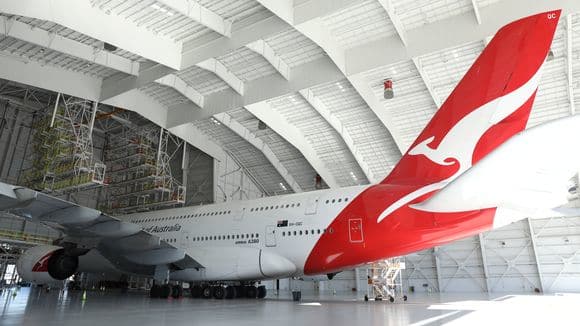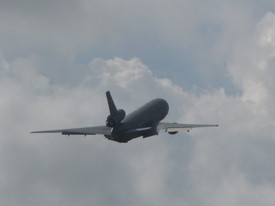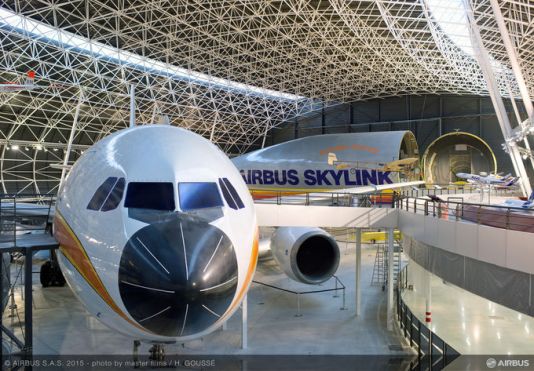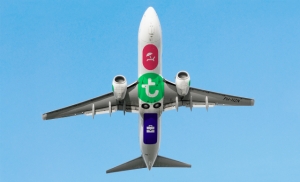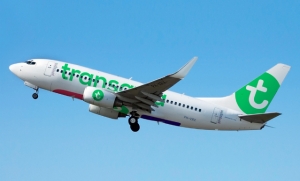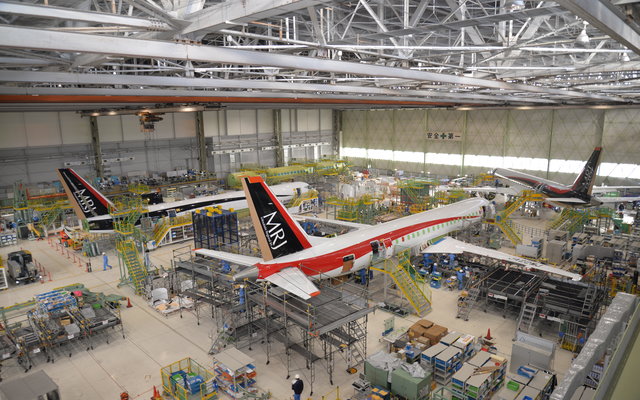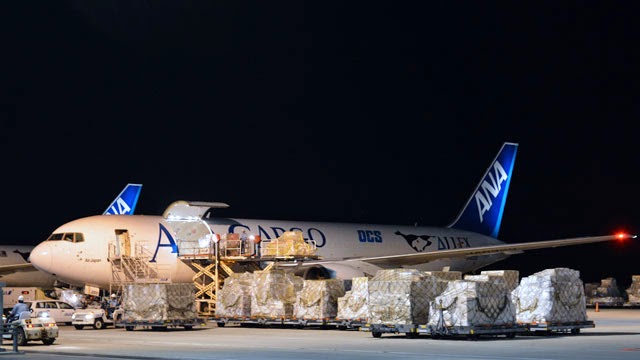ON THE BOEING FRONT
Status of Boeing Strategy Concerning the 737 & 787
Boeing believes it will resume 737 Max deliveries in the third quarter of 2020, with chief executive David Calhoun saying the company is progressing well through certification work despite challenges posed by coronavirus.
“We currently expect the necessary regulatory approval to allow Max deliveries in the third quarter,” Calhoun says on April 29. ”We are very confident that the process will conclude with the certification.”
Boeing is now working through what Calhoun describes as “a mountain” of documentation work. He says the certification pace has been hampered by the coronavirus pandemic, which has forced staff to work from home.
Boeing expects to resume 737 Max production this year at “low rates”. It does not specify initial production volumes, but says production will “gradually increase” to 31 aircraft monthly in 2021, with additional increases to follow.
As to the 787, Boeing has no immediate plan to restructure its 787 manufacturing footprint despite announcing a major cut in production. However, Chief Executive David Calhoun says Boeing will have time to review it manufacturing strategy in the coming years, as 787 production further declines.
On April 29 Boeing announced it will reduce 787 production from 14 aircraft monthly to 10 monthly this year-end then to seven monthly by 2022.
“Certainly, both lines will be running during the initial phase of reducing production to 10 787 monthly.” Calhoun says. ”We have not made any decision on the 787 production locations,” he adds of production requirements after 2020.
“We will have plenty of time to figure out exactly the way to go.”
Source: Boeing
ON THE AIRBUS FRONT
Airbus Sees More Pain in Commercial Market Through 3Q 2020
Airbus does not expect to have clear visibility of full short-to medium-term impact of the Covid-19 crisis until June. In a briefing for financial analysts the morning of April 29 to announce diminished first-quarter results for 2020, Airbus indicated that it will likely defer decisions on steps to right-size the business for another two or three months. This will allow more time to reassess the situation of its airline customers and also get more complete guidance from governments on steps to ease lockdown restrictions.
Group CEO Guillaume Faury told analysts that the greatest Covid-19 impact so far has been on its commercial aircraft business. Its short-term reaction has been to scale back production rates by around a third to 48 units a month, including 40 A320s, 6 A350s and 2 A330s. The A220 production line in Canada is expected to return progressively to a monthly output rate of 4 aircraft.
“The industry is now facing the gravest crisis in its history and we have a strong focus on matching production to demand and also cash containment,” Faury said.
Earlier in April Airbus announced that it is tapping government-backed payroll protection support schemes. This has resulted in around 3,000 being furloughed on close to full pay in France and a further 3,200 in the UK.
Airbus is deferring further decisions on possible workforce reductions until June, when it expects to have a clearer idea of reduced demand for airliners.
Source: Airbus
REGIONAL/BUSINESS JETS
Supersonic Jet Maker Aerion to Build Manufacturing Site In Florida
Supersonic business jet company Aerion will manufacture its in-development AS2 transport aircraft at a new facility in the Florida city of Melbourne, in the heart of the state’s aerospace cluster.
The company, currently based in Reno, intends this year to begin constructing in Melbourne a “global headquarters and integrated campus for research, design, build and maintenance” of the AS2, Florida governor Ron DeSantis’ office said on April 24. Aerion’s media representative confirms the plan.
The $300 million project will create a facility called “ Aerion Park” in a region of Florida known as the “Space Coast”, says the governor.
The Company intends to begin manufacturing AS2 there in 2023, and the site will employ 675 people by 2026.
“ Having evaluated a number of potential locations for our new home, we are excited to partner with Florida and Melbourne community to create a sustainable supersonic future,” says Aerion chief executive Tom Vice. Aerion has said it hopes to complete first flight of the 12- passenger AS2 in 2024.
Source: Aerion/Picture Aerion
OTHER AVIATION NEWS
AvioInteriors Seating Innovation Addresses Covid Concerns
Italian aircraft seat and cabin interior supplier AvioInteriors has released a concept for new seating solution designed to theoretically allow airlines to fill their middle seats amid Covid-19 concerns. Calling it a “kit-level solution”, operators can install on existing seats to make close proximity safer, the company’s Glasssafe and Janus products feature transparencies to create an isolated volume around the passenger to avoid or minimize the spread of germs between occupants.
The Company can supply a Glasssafe retrofit kit in opaque material or with different degrees of transparency. AvioInteriors designed the application with various executions and fixing systems that allow easy installation and removal and to allow for traditional seat-back magazine pockets and tables.
The Proposal for the second product, called Janus, features a center seat of a three-abreast layout positioned in the opposite direction, while passengers seated on the side seats, aisle, and fuselage continue to face in the forward direction.
As in the Glasssafe applications high shield that prevents breath propagation surrounds each Janus seat. But another advantage of the Janus setup is the middle seat passenger has unobstructed access to both armrests.
If approved the AvioInteriors products would allow airlines to generate 33 percent more revenue if regulators call for middle seats to remain empty. In fact, International Air Transport Association director general Alexandre de Juniac warned of the likelihood of higher airfares due to empty middle seat requirement.
Source: ainonline
Southwest Delays Deliveries of 59 737 Max to Post-2021
Southwest Airlines, among the world’s top Boeing 737 Max customers, has pushed back deliveries of 59 Max aircraft in response to the travel downturn caused by the coronaviris pandemic.
Previously, Southwest anticipated receiving 107 Max jets from Boeing in 2020 and 2021, including 62 aircraft that had been scheduled for delivery in 2020 and 45 scheduled for 2021, securities filing shows.
The airline provides few details about how many 737 Max aircraft it intends to acquire in 2020 and 2021, other than saying it expects to receive less than 27 jets from Boeing this year.
Those 737 Max are aircraft Boeing manufactured for Southwest after regulators grounded the type in March 2019. Boeing continued manufacturing the jets after grounding, storing the airliners until the grounding lifts.
Southwest is “still working on specifics of how many we want to take between now and the end of the year,” chief financial officer Tammy Romo says, during Southwest’s first-quarter earnings call on April 28. “We have fleet flexibility.”
News of the deferrals came the day Southwest reported a first-quarter loss of$94 million, reflecting the collapse of travel demand during the pandemic.
While some Max customers have cancelled orders in recent weeks, Romo says Southwest still prefers to take new jets.”Our preference is to get new airplanes from Boeing,” she says.
Romo adds that “Max’s 14% fuel savings (compared to 737NGS) is still very meaningful and significant”, despite tumbling fuel prices, which have eroded the financial value of efficiency.
Source: Southwest/Flightglobal
Delta to Retire Its MD-88, MD-90 Fleets in June
Delta Air Lines will retire the McDonnell Douglas MD-88 and MD-90 aircraft earlier than previously planned, with both aircraft types exiting the fleet effective June 2020.
The accelerated retirement schedule of both aircraft is a result of the Covid-19 pandemic as the airline reduces capacity systemwide.
Delta cut its overall active fleet by about half, parking more than 600 mainline and regional aircraft in the last two months.
The 149-seat MD-88 was previously set to retire by the end of 2020. As of February this year, prior to the coronavirus-driven fleet reduction, there were 47 MD-88s and 29 MD90s operating. Both aircraft operated across much of Delta’s domestic network and have been workhorses for the airline.
Delta continues to evaluate its broader fleet plan and will consider additional aircraft retirement to focus on a modern, more simplified fleet going forward.
Source: World Airline News
LATEST NEWS
- Airbus has backed out of a joint venture with Thai Airways to build a new MRO campus at Thailand’s U-Tapao airport.
- El Al Israeli flag-carrier has reached a sale-and-leaseback agreement with an unidentified foreign company covering three Boeing 737-800s.
- American Airlines sets a company cargo record on a Boeing 777-300, the flight on April 15 broke American’s all-time record for freight volume, removing 115,349 pounds(52,321 kilograms) of soybean seeds.On one of American’s cargo-only routes from Buenos Aires to Miami.
- Lufthansa is prematurely phasing out six Airbus A380 as part of fleet cuts across the airline group.
- Rolls-Royce says it is aiming to bring the number of Boeing 787s on the ground for Trent 1000 engine modification reasons down to fewer than 10 by the end of the second quarter.
- Silver Air a private jet management and charter company has added a Boeing Business Jet (BBJ) with unrestricted charter access based in West Palm beach, Florida.
- Boeing conducted a successful first flight of its second 777X airplane. Designated WH002 the second of four 777-9 flight test vehicles.
- Qantas is putting Project Sunrise on hold, citing the impact of the Covid-19 outbreak on air travel.
- United Airlines will sell and lease back 22 planes to Bank of China(BOC) Aviation.The deal involves six Boeing 787-9s and 16 Boeing 737-9 MAX aircraft.
- German Government First A350 Airbus has transferred the first of three A350-900s for the federal German government to Hamburg for outfitting at the Lufthansa Technik facility on May 7.
Sources: United Airlines, Flightglobal, Boeing, Qantas, Rolls-Royce, American Airlines, Lufthansa, Airbus, El Al.
AIR CARGO
Air Freight Market Goes Into Overdrive
Damian Brett, the editor of Air Cargo News, outlines how the freight sector has been affected by the coronavirus outbreak.
While passenger airlines have heavily reduced their services over recent weeks, the air cargo market has gone into overdrive as a result of the coronavirus pandemic.
The sector is managing a huge capacity crunch as airlines have largely stopped operating the bellyhold services which make up roughly 50% of cargo capacity.
Consultant Seabury estimates that at the end of March, cargo capacity was down by around 35% compared with the year-ago figure.
The drop-off in demand lags the capacity reductions, as a result, freight rates have taken off.
Numbers from Tac Index show that rates an services from China/Hong Kong to Europe increased by 156% from March 2 to April 6.
On China/Hong Kong to North America an increase of 90.5% as recorded during the same timeframe.
So what of the coming months? There are some early signs that the situation is easing as carriers have started to re-activate parked-up freighters aircraft, passenger aircraft are being utilized as ad hoc freighters and containership operations come into play.
Lufthansa Cargo chief executive Peter Gerber says that while it is impossible to predict what the future holds, it could be the case that there are several spikes in cargo demand over the coming months as production plants in various countries come back on line.
The prospect of this outcome was also posited by logistics and parcels giant Deutsche Post DHL in recent business performance update.
“While the development of the business situation in China has been quite promising in the last weeks, Europe and North America are still in an earlier stage of the pandemic,” DP DHL said.
Source: Air Cargo News/Picture Cargolux
OTHER NOTEWORTHY NEWS
Lessors see no ( one-size-fits- all ) solution to help airlines through crisis
While aircraft lessors are agreeing to a number of rental deferral requests to help airline customers struggling through the coronavirus crisis, leasing executives stress there is no one size-fits-all approach being sought by airlines.
Speaking on May 6 during the Leasing Leaders on Aviation Crisis webinar, organized by FlightGlobal in association with IBA Group. BOC Aviation chief executive Robert Martin notes rapid funding action- including measures from governments-means some airlines have been more interested in, for example, sale-and lease-back activity.
“Clearly a lot of our customers were immediately hit and have asked for help, but it’s not one-size-fits-all,” he says.” Some airlines didn’t need liquidity because they already have access to liquidity in other ways. So actually they were more interested in doing purchase-and lease-back business, and we have done $5 billion of that since Covid started.”
“As we have addressed these issues, it’s clear to us you can tell the experienced airlines who have been through something like this before,” he says. For example, editing the speed with which North American carriers acted to improve their liquidity and that Chinese carriers tapped their domestic bond market.
Another lessor leader panelist on the webinar, chief executive of Dubai Aerospace Enterprise Firoz Tarapore, concurs that there is no single response.
In publishing its first quarter results, the lessor says that at the end of April, it had granted rent deferral requests from 25 customers – an aggregate rent totaling 5% of annual revenue. It is also evaluating rent deferral request from 33 customers, the aggregate rent deferral for which totals 10% of annual revenue.
“It’s been a deliberate and corroborative approach to make sure we carefully balance the needs of our clients and our own needs to make sure we are here for our other customers tomorrow.” said Tarapore.
Separately another aircraft lessor, Avalon, in reporting its first quarter results said it has received requests for payment relief from more than 80% of its current owned and managed customer base.
Source: Flightglobal.com/webinars
Researched and Compiled by :
Ed Kaplanian Commercial Aviation Advisor
Contact – ekaplanian@msn.com
Editor: Lee Kaplanian








